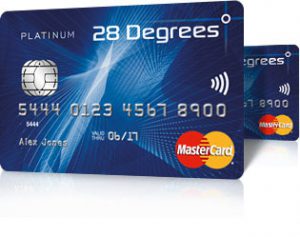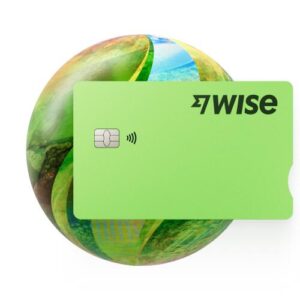4 Best Ways to Take Travel Money to Japan in 2025
Japan is a big tourist draw for many Australians - whether you want to experience the frenetic rush of the cities, immerse yourself in the culture, or hit the slopes, there’s something for you there. However, life in Japan isn’t cheap - so you’ll need to plan your travel spending in advance so you don’t blow your budget.
This guide covers 4 popular ways to take money to Japan, so you can spend without needing to worry too much about high or unexpected fees.
Best ways to take money to Japan
In this guide we’ll walk through 4 of the most practical and popular ways to take money to Japan, including our top picks for providers to look at, pros and cons. Here are the common ways to pay overseas that we’ll investigate:
Prepaid travel cards to use in Japan
Ideal for: adding money conveniently in AUD, for spending and withdrawal in JPY on arrival
You can order a prepaid travel money card online from specialist services, or pick one up at a branch of Travelex or the Post Office. Top up your card in dollars using your AUD card or a bank transfer, and switch to JPY in advance so you can lock in the exchange rate and see your travel budget easily. In some cases, you can also choose to leave your money in dollars and the card will convert your payment using the live exchange rate whenever you buy something or make a withdrawal.
Double check the exchange rate used by the card you pick. Some providers add a markup on the mid-market rate - an extra fee. This isn’t unusual at all but it does mean it’s harder to work out exactly what your foreign exchange is costing you. Picking a card that offers the mid-market rate or as close as possible to it makes it easier to see what you’re spending and keeps the costs down overall.
It’s also worth looking out for a card with no inactivity fee and no ongoing charges, so you can just top up and use it again on your next trip.
Learn more about our picks for the 6 best prepaid cards - there’s more on our top choice, Wise, next.
Wise - our pick for prepaid travel card
With this card:
- Hold and exchange 40+ currencies in your linked Wise account
- No annual or monthly fees to pay, and no minimum balance requirement
- Currency exchange uses the mid-market rate with no markup
- Some free ATM withdrawals available every month
- Virtual and physical cards available
| Wise card pros | Wise card cons |
|---|---|
| ✅ Currency exchange uses the mid-market rate
✅ No foreign transaction fees apply ✅ Free to hold and spend 40+ currencies ✅ Receive payments to your Wise account in a selection of global currencies ✅ No minimum balance or ongoing fees |
❌ 10 AUD fee to get a card in the first place
❌ Free ATM withdrawals are limits to 2 per month, to the value of 350 AUD. Fees of 2% + 1.5 AUD after that ❌ Express delivery fees if you want to get your card as soon as possible |
Pros and cons of taking money to Japan with a prepaid travel card
Pros:
- Japanese yen are supported for spending and withdrawal with most cards
- Many cards support multiple currencies so you can use them again on your next trip
- Safe to use, as your prepaid card isn’t linked to your main everyday account
- Cards are available with no minimum balance or ongoing fees to pay
- Currency exchange may have better rates than a bank will offer
Cons:
- Exchange rates may include a markup on the mid-market rate
- ATM fees may apply, depending on the card you pick
- Some cards have inactivity fees which apply if you don’t use them regularly
Travel debit cards to use in Japan
Ideal for: convenient spending and withdrawals in Japan with travel friendly perk and no interest to pay.
Travel debit cards can be a good pick as they often offer travel perks and benefits, like insurance or airport lounge access, plus low or no foreign transaction fees. You can order a travel debit card from a specialist service, or in some cases get one from your bank. The features you get are often quite different depending on whether you choose a specialist provider or a bank service, so it’s worth weighing up both options before you decide.
Travel debit cards from specialist providers usually come with a multi-currency digital account which can hold and exchange dozens of currencies. Plus, your card isn’t linked to your main AUD account, so even if you’re unlucky enough to have your travel card lost or stolen you can simply freeze the card without worrying about anyone accessing your primary AUD funds.
We’ll go into more detail about our top pick for a travel debit card - Revolut - next, and you can also read more about the best travel debit cards in Australia here.
Revolut - our pick for travel debit card for Japan
With this card:
- Hold and exchange 25+ currencies
- Choose the account plan that suits your needs and spending, including some with no monthly fees
- Some no- fee ATM withdrawals and currency exchange with the mid-market rate, based on the account tier you choose
- Extra perks like accounts for under 18s, plus cash back on card spending for top tier account holders
- Travel benefits offered for some account plans
| Revolut card pros | Revolut card cons |
|---|---|
| ✅ Hold and exchange 25+ currencies
✅ Choose from different account tiers to suit different customer needs ✅ Get some no fee ATM withdrawals every month, depending on the plan you pick ✅ Get some currency exchange every month which uses the mid-market rate - limits vary by account plan ✅ No card order fee |
❌ Ongoing fees apply for some account tiers
❌ Out of hours fees push up currency exchange costs on the weekend ❌ ATM fees of 2% apply once you exhaust your no fee withdrawals |
Pros and cons of taking money to Japan with a travel debit card
Pros:
- Top up in AUD and spend in JPY
- Access travel perks like free airport lounge access or insurance
- Spend and make ATM withdrawals with no interest, cash advance or penalty fees
- Many cards from specialist services are linked to multi-currency accounts you can use on future trips too
- Not connected to your main AUD account, adding a layer of security when you’re overseas
Cons:
- Some transaction fees usually apply
- You may pay a fee when converting from one currency to another, which may be split out transparently, but which is often just rolled up in the exchange rate you get
- Some cards have monthly fees to pay to get full feature access
Taking cash in Japan
Ideal for: spending where cards aren’t accepted - you’ll find many smaller businesses prefer cash to cards.
While things are changing slowly in favour of card usage, cash is still heavily used in Japan. Large stores and hotels will usually take cards, but smaller merchants normally require cash payments, so carrying cash in yen is essential.
It’s also worth noting that not all ATMs in Japan can offer services to foreign card holders. Look out for an ATM marked as ‘international’. You can usually use machines branded as Seven Bank, Japan Post and E-net, which are found in 7-Eleven stores, train stations and malls. If you’re outside of city areas it’s worth carrying a bit more cash than you think you’ll need just in case you can’t get to an international ATM conveniently.
The best strategy for your JPY cash depends on where you’re heading. You can get your JPY before you travel through a service like Travelex, or you could choose to take some AUD to convert when you’re there if you’ll be in tourist areas. If you’re sticking to cities, making ATM withdrawals in Japan should be fine, but off the beaten track this may be trickier.
Generally having a few different payment options at any one time is a good plan. Carry some JPY cash (either converted in advance or by making an ATM withdrawal at the airport on arrival), make ATM withdrawals when you can, and have some AUD cash to convert too, and you should be covered for all eventualities.
| Cash pros | Cash cons |
|---|---|
| ✅ Cash is the only accepted payment method in smaller places
✅ Convert in advance so you know exactly what you have to spend ✅ Use travel debit cards to make cash withdrawals when you can, which often offer better rates than buying cash |
❌ Carrying a lot of cash isn't particularly safe
❌ You’ll struggle to find exchange services in many more remote locations ❌ Not all ATMs accept foreign cards - look out for machines marked as international ❌ Exchange rates vary widely and usually include a markup - an extra fee
|
Do I need cash in Japan?
Yes. Having cash in JPY is essential, as you’ll find cash is the only accepted payment method in many smaller stores and restaurants. Generally having more than one payment option with you is a smart plan, so taking some cash in JPY and AUD, plus one or more cards should mean you’re prepared for anything.
How to buy Japanese yen on arrival in Japan?
If you carry Australian dollars in cash when you travel to Japan, you can exchange them with currency exchange stores in cities and popular tourist areas. Bear in mind that the exchange rate you’ll get in the airport or your hotel is not likely to be the best available - using an exchange service in the city centre where there’s more competition will usually get you the best overall deal.
How to buy Japanese yen in Australia?
You can also exchange AUD to Japanese yen in cash in Australia before you travel. Options like Travelex often let you order JPY online and collect your cash later in a branch. Fees and exchange rate markups may apply.
Best place to get Japanese yen from
There’s no single best place to get your travel cash. Using a combination of carrying some JPY and AUD in cash, and making some cash withdrawals when you’re in the city and can find an international ATM is a good way to balance security and convenience when travelling in Japan.
Travel credit cards to use in Japan
Ideal for: easy spending where cards are accepted - often with extra rewards when you spend in JPY
Travel credit cards work the same as any other credit card, but will usually come with perks like low or no foreign transaction fees or extra reward points, cashback or miles when you spend in foreign currencies. Credit cards are handy if you want to spread the costs of your trip to Japan across several months - but don’t forget that interest - and potentially penalty fees - will apply if you don’t clear your bill regularly.
As we’ve already explored, relying on a card when you’re in Japan isn’t really possible. You’ll also need cash in some situations. If you’re intent on getting your yen in cash from ATMs when you arrive, bear in mind that using a credit card at an ATM is a very expensive option, with cash advance fees and interest mounting up quickly.
Learn about the best travel credit cards in Australia here, and read on for more on our top pick.
28 Degrees - our pick for travel credit card
With this card:
- Order online and start spending with your virtual card instantly if approved
- No annual or monthly fees
- No foreign transaction or currency conversion fees
- Make ATM withdrawals overseas - fees apply for this service
- Unlock perks like discounts on travel bookings and internet roaming packages

| 28 Degrees pros | 28 Degrees cons |
|---|---|
| ✅ No annual or monthly fees
✅ No foreign transaction fees - your payment is converted to AUD using the Mastercard exchange rate ✅ Repay your bill in full monthly to avoid interest or penalty fees ✅ Travel perks and partner discounts available |
❌ Cash advance fee of 3% or 4 AUD (whichever is greater), plus interest, when making an ATM withdrawal
❌ Interest charges apply if you don’t repay your bill in full monthly ❌ Subject to eligibility and credit checks |
Pros and cons of travel credit cards to Japan
Pros:
- Cards issued on major networks are usually accepted anywhere international card payments are supported
- Earn rewards and discounts, or get travel perks - depending on the card you pick
- Some cards have low or no foreign transaction fees
- Credit cards are useful as a payment guarantee in some situations
Cons:
- Interest and fees usually apply if you don’t pay back your bill immediately
- Using your card at an ATM is expensive - and you’ll definitely need some cash while in Japan
- Eligibility rules apply
Travel requirements from Australia to Japan
Generally if you’re heading to Japan with an Australian passport you can enter for tourist or business reasons under the visa exemption scheme, for up to 90 days. Bear in mind that entry requirements can change rapidly, so checking before you travel is always advised.
Check the government’s Smart Traveller website to learn more.
Does Japan accept Australian dollars?
No. You won’t be able to spend AUD anywhere in Japan. If you’re carrying dollars with you you'll need to exchange them for Japanese yen when you arrive.
Best currency to take to Japan
You’ll only be able to spend in Japanese yen in Japan, so you can choose to either carry AUD in cash with you and convert on arrival, or to order your travel cash in Japanese yen before you leave. Bear in mind that exchange offices will be hard to find in more remote areas.
How much money do I need per day in Japan?
Exactly what you’ll need to pay for your visit will depend a lot on what you like to do, and where in Japan you’ll stay. You’ll find prices in major cities far higher than in the countryside, but there’s a pretty good choice of accommodation price points wherever you go. That means you can design your trip to suit your budget.
To put this in context, a 3 course lunch for 2 will set you back a little over 50 AUD on average, a cheap lunch for one will be around 10 dollars - and a domestic beer about 4 dollars. Public transport can be around 2 dollars for a single journey, making this an attractive option for getting around while in Japan.
Do some detailed research to see how much things are likely to cost based on your plans and where you’re headed, so you can set your budget. Get more detailed cost information by city, from Numbeo.com.
How much does it cost to fly from Australia to Japan?
Flight costs vary widely depending on where in Australia you’ll leave from and the time of year you’ll visit Japan. At the time of writing (September 2023), you can find flight deals from under 500 AUD return from Sydney to Tokyo’s Narita airport, for example.
Top travel money tips to Japan
Here are a few final tips to help your money go further while you’re away:
- Cash is king in Japan - make sure you have some cash on your at all times, to avoid unnecessary problems
- Have several different payment methods in case one isn't accepted wherever you are
- Get a travel money card before you leave to make it easier and cheaper to spend and withdraw in Japan
Avoid common travel money traps in Japan with this handy guide.
Conclusion
There’s no single best way to take money to Japan. You’ll meet situations where you definitely need cash - but carrying all your travel money in cash isn’t a smart move for safety. That means that for most people, having a variety of ways to pay including some cash and one or more cards makes sense.
Consider getting a travel card - such as a prepaid travel card from Wise or a travel debit card from Revolut - to use alongside your regular debit or credit card, and make ATM withdrawals where you see international ATMs available during your trip. Using your specialist travel card can mean you get a good exchange rate, plus many have some free ATM withdrawals overseas. They’re also a safe option as they’re not linked to your home bank account, so even if you’re unlucky and have your card stolen the thieves can’t get to your everyday account.
Use this guide to decide which option to take money to Japan will work best for you, based on your own preferences and needs.
FAQ - Best ways to take money to Japan
Should I exchange money before I travel to Japan?
You’ll need to have some cash in Japan, so you can exchange in advance or make an ATM withdrawal on arrival at the airport. Using an ATM can also be cheaper than advance exchange, particularly if you have a travel card from a provider like Wise or Revolut.
Can I withdraw Japanese yen from a local ATM?
You can’t withdraw Japanese yen at an ATM in Australia, but you can use a travel card to make an ATM withdrawal on arrival in Japan. Bear in mind that not all ATMs in Japan can support international cards - look out for specific international ATMs at branches of 7-Eleven and Japan Post.
Are prepaid travel cards a good way to take money to Japan?
Travel prepaid cards from services like Wise are a safe way to spend when abroad. With Wise you’ll also get mid-market exchange rates and low, transparent fees which can bring down the costs of your trip.
Can I use cash in Japan?
Yes. Cash is the only payment method accepted by many smaller merchants, so having some cash to use alongside your cards is pretty much essential when you’re in Japan.


